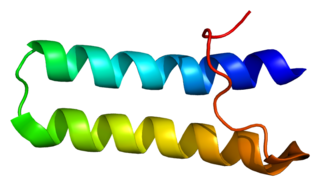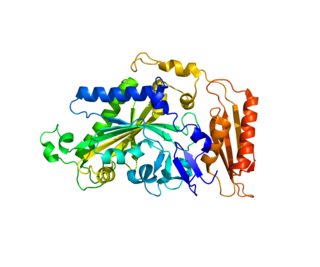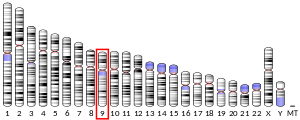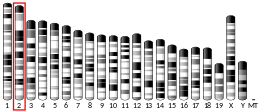
Ubiquitin-protein ligase E3A (UBE3A) also known as E6AP ubiquitin-protein ligase (E6AP) is an enzyme that in humans is encoded by the UBE3A gene. This enzyme is involved in targeting proteins for degradation within cells.

Argininosuccinate synthase or synthetase is an enzyme that catalyzes the synthesis of argininosuccinate from citrulline and aspartate. In humans, argininosuccinate synthase is encoded by the ASS gene located on chromosome 9.

The enzyme argininosuccinate lyase (EC 4.3.2.1, ASL, argininosuccinase; systematic name 2-(N ω-L-arginino)succinate arginine-lyase (fumarate-forming)) catalyzes the reversible breakdown of argininosuccinate:

Citrin, also known as solute carrier family 25, member 13 (citrin) or SLC25A13, is a protein which in humans is encoded by the SLC25A13 gene.

Histone H3.3 is a protein that in humans is encoded by the H3F3A and H3F3B genes. It plays an essential role in maintaining genome integrity during mammalian development.

Centromere protein F is a protein that in humans is encoded by the CENPF gene. It is involved in chromosome segregation during cell division. It also has a role in the orientation of microtubules to form cellular cilia.

AT-rich interactive domain-containing protein 1A is a protein that in humans is encoded by the ARID1A gene.

Mesoderm-specific transcript homolog protein is a protein that in humans is encoded by the MEST gene.

Methylenetetrahydrofolate dehydrogenase, cyclohydrolase and formyltetrahydrofolate synthetase 1 (MTHFD1) is a gene located in humans on chromosome 14 that encodes a protein, C-1-tetrahydrofolate synthase, cytoplasmic also known as C1-THF synthase, with three distinct enzymatic activities.

Bifunctional aminoacyl-tRNA synthetase is an enzyme that in humans is encoded by the EPRS gene.

Suppressor of tumorigenicity protein 7 is a protein that in humans is encoded by the ST7 gene. ST7 orthologs have been identified in all mammals for which complete genome data are available.

Protein O-linked-mannose beta-1,2-N-acetylglucosaminyltransferase 1 is an enzyme that in humans is encoded by the POMGNT1 gene.

Leucyl-tRNA synthetase, cytoplasmic is an enzyme that in humans is encoded by the LARS gene.

Protein reversionless 3-like (REV3L) also known as DNA polymerase zeta catalytic subunit (POLZ) is an enzyme that in humans is encoded by the REV3L gene.

Probable leucyl-tRNA synthetase, mitochondrial is an enzyme that in humans is encoded by the LARS2 gene.

Calcium-binding mitochondrial carrier protein Aralar1 is a protein that in humans is encoded by the SLC25A12 gene. Aralar is an integral membrane protein located in the inner mitochondrial membrane. Its primary function as an antiporter is the transport of cytoplasmic glutamate with mitochondrial aspartate across the inner mitochondrial membrane, dependent on the binding of one calcium ion. Mutations in this gene cause early infantile epileptic encephalopathy 39 (EIEE39), symptomized by global hypomyelination of the central nervous system, refractory seizures, and neurodevelopmental impairment. This gene has connections to autism.

59 kDa 2'-5'-oligoadenylate synthetase-like protein is an enzyme that in humans is encoded by the OASL gene.

Phenylalanyl-tRNA synthetase, mitochondrial (FARS2) is an enzyme that in humans is encoded by the FARS2 gene. This protein encoded by FARS2 localizes to the mitochondrion and plays a role in mitochondrial protein translation. Mutations in this gene have been associated with combined oxidative phosphorylation deficiency 14, also known as Alpers encephalopathy, as well as spastic paraplegia 77 and infantile-onset epilepsy and cytochrome c oxidase deficiency.

CTP synthase 2 is an enzyme that in humans is encoded by the CTPS2 gene.

Arginine-rich, mutated in early-stage tumors (ARMET), arginine-rich protein (ARP), or mesencephalic astrocyte-derived neurotrophic factor (MANF) is a protein that in humans is encoded by the MANF housekeeping gene.
























